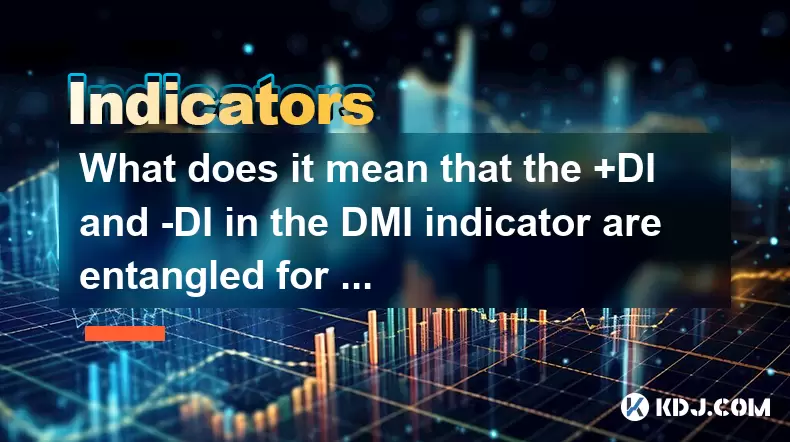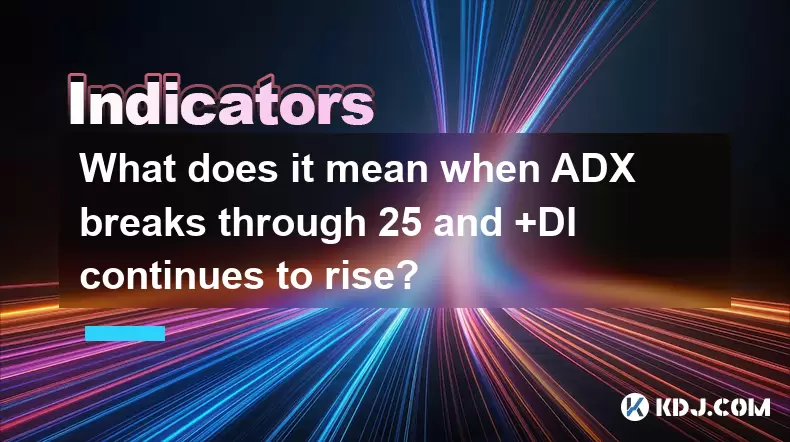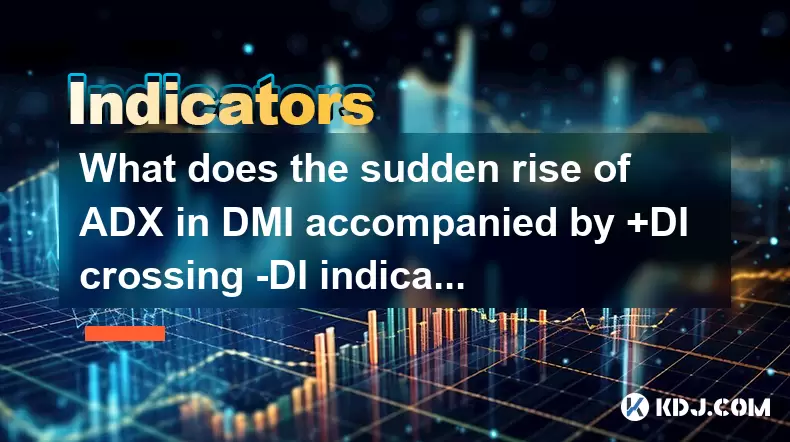-
 Bitcoin
Bitcoin $117500
2.04% -
 Ethereum
Ethereum $3759
3.02% -
 XRP
XRP $3.171
3.30% -
 Tether USDt
Tether USDt $1.000
0.03% -
 BNB
BNB $782.4
2.52% -
 Solana
Solana $187.2
5.62% -
 USDC
USDC $0.0000
0.02% -
 Dogecoin
Dogecoin $0.2380
5.26% -
 TRON
TRON $0.3175
1.07% -
 Cardano
Cardano $0.8227
4.03% -
 Hyperliquid
Hyperliquid $44.50
5.44% -
 Sui
Sui $4.020
10.07% -
 Stellar
Stellar $0.4396
6.28% -
 Chainlink
Chainlink $18.32
4.55% -
 Hedera
Hedera $0.2628
10.71% -
 Bitcoin Cash
Bitcoin Cash $554.8
4.90% -
 Avalanche
Avalanche $24.20
4.60% -
 Litecoin
Litecoin $113.7
2.31% -
 Shiba Inu
Shiba Inu $0.00001413
5.99% -
 UNUS SED LEO
UNUS SED LEO $8.984
0.11% -
 Toncoin
Toncoin $3.326
7.22% -
 Ethena USDe
Ethena USDe $1.001
0.00% -
 Uniswap
Uniswap $10.49
4.56% -
 Polkadot
Polkadot $4.092
4.02% -
 Monero
Monero $326.6
1.30% -
 Dai
Dai $1.000
-0.01% -
 Bitget Token
Bitget Token $4.570
2.49% -
 Pepe
Pepe $0.00001267
5.10% -
 Aave
Aave $297.3
3.10% -
 Cronos
Cronos $0.1344
4.10%
What does it mean that the +DI and -DI in the DMI indicator are entangled for a long time?
When +DI and -DI are entangled, it signals market indecision, often leading to sideways movement in crypto prices until a clear trend emerges.
Jun 24, 2025 at 04:49 am

Understanding the DMI Indicator
The Directional Movement Index (DMI) is a technical analysis tool used to determine the strength and direction of a trend in cryptocurrency markets. It consists of two main components: +DI (Positive Directional Indicator) and -DI (Negative Directional Indicator), along with the ADX (Average Directional Index) line that measures trend strength.
+DI reflects upward movement, while -DI represents downward momentum. Traders use these lines to identify potential buy or sell signals based on their crossovers and relative positions.
What Does It Mean When +DI and -DI Are Entangled?
When +DI and -DI lines remain close together for an extended period, they are said to be "entangled." This situation typically indicates market indecision, where neither bullish nor bearish forces dominate price action. In the context of cryptocurrency trading, this can signal a sideways or consolidating market phase.
This entanglement often occurs during periods of low volatility or when major news events are pending. For instance, before a significant regulatory announcement or a major network upgrade, crypto prices may stagnate, causing both indicators to move closely alongside each other.
Implications of Long-Term Entanglement in Crypto Markets
In cryptocurrency trading, where high volatility is the norm, prolonged entanglement of +DI and -DI suggests that traders should be cautious about entering new positions. The lack of directional bias means that any breakout could happen in either direction, depending on upcoming market catalysts.
For example, if Bitcoin's +DI and -DI have been entangled for days, it may indicate that the market is waiting for a trigger such as a macroeconomic event or a major exchange listing. During such times, traders should avoid aggressive long or short entries until a clear trend emerges.
Moreover, ADX values below 20 during this phase confirm weak trend strength, reinforcing the idea that the market is range-bound rather than trending.
How to Interpret Crossovers After a Period of Entanglement
Once the +DI and -DI lines break away from their entangled state, the direction of the crossover becomes crucial:
- If +DI crosses above -DI, it suggests bullish momentum gaining control, potentially signaling a buying opportunity.
- Conversely, if -DI crosses above +DI, it implies bearish dominance, indicating a possible sell-off.
Traders should wait for confirmation of the trend by checking whether the ADX line rises above 25 or 30, which would suggest increasing trend strength.
In volatile assets like Ethereum or Solana, these crossovers may occur more frequently, but only those accompanied by rising ADX values should be considered reliable.
Strategies for Trading During +DI/-DI Entanglement
During prolonged entanglement phases, range-bound strategies become more effective than trend-following ones. Here are some approaches traders might consider:
- Wait for a breakout: Monitor price action near key support and resistance levels. A confirmed breakout above resistance or below support may signal the next trend direction.
- Combine with volume indicators: Rising volume during a breakout increases the likelihood of a sustainable trend forming.
- Use ADX for confirmation: Only take trades once ADX shows strengthening momentum beyond the threshold of 25.
- Avoid false signals: In low ADX environments, frequent crossovers may lead to whipsaws, so filtering signals with other tools like RSI or MACD can help.
- Set tight stop-loss orders: Since the breakout direction is uncertain, limiting downside risk becomes essential.
These strategies are especially relevant in altcoin markets, where price movements can be erratic and misleading without strong directional momentum.
Technical Setup for Monitoring +DI and -DI Behavior
To effectively monitor the behavior of +DI and -DI, traders should configure their charts correctly. Here’s how to set up the DMI indicator on popular platforms:
- Open your preferred trading platform (e.g., TradingView or Binance).
- Navigate to the indicators section and search for “DMI” or “Directional Movement.”
- Apply the default settings (typically 14 periods) unless you're adjusting for specific market conditions.
- Ensure all three components (+DI, -DI, and ADX) are visible on the chart.
- Adjust colors for better visibility: assign green to +DI, red to -DI, and blue to ADX.
By observing how these lines interact over time, traders can gain insights into evolving market dynamics.
Frequently Asked Questions
Q: Can I use DMI alone to make trading decisions in crypto markets?
A: While DMI provides valuable insights into trend direction and strength, relying solely on it may result in false signals. Combining it with volume indicators, moving averages, or candlestick patterns improves accuracy.
Q: What timeframes are best suited for analyzing +DI and -DI entanglement?
A: Longer timeframes like 4-hour or daily charts offer more reliable signals regarding trend strength and direction. Shorter timeframes (e.g., 15-minute) may show excessive noise due to crypto volatility.
Q: How does DMI compare to MACD in identifying trends?
A: DMI focuses specifically on trend strength and direction, whereas MACD identifies momentum shifts and potential reversals. Both serve different purposes and can complement each other.
Q: Is the DMI indicator suitable for all cryptocurrencies?
A: Yes, DMI can be applied to any tradable asset including major cryptocurrencies like Bitcoin, Ethereum, and altcoins. However, its effectiveness depends on the asset’s liquidity and volatility profile.
Disclaimer:info@kdj.com
The information provided is not trading advice. kdj.com does not assume any responsibility for any investments made based on the information provided in this article. Cryptocurrencies are highly volatile and it is highly recommended that you invest with caution after thorough research!
If you believe that the content used on this website infringes your copyright, please contact us immediately (info@kdj.com) and we will delete it promptly.
- Vaultz Capital's Bitcoin Bet: A Strategic Shift on the Aquis Exchange
- 2025-07-26 20:30:12
- Pi Coin, Wallet Features, and Coinbase: What's the Buzz?
- 2025-07-26 18:30:12
- Worldcoin, Punisher Coin, and the Meme Coin Mania: What's the Haps?
- 2025-07-26 18:30:12
- Conviction, Justice System, and Murders: A Look at Recent Cases and Shifting Perspectives
- 2025-07-26 18:50:11
- Shiba Inu, Remittix, and the Market Surge: What's the Hype?
- 2025-07-26 19:10:12
- Cardano Price, ADA Holders, and Leadership Criticism: What's the Real Deal?
- 2025-07-26 19:30:12
Related knowledge

What does it mean that the rebound is blocked after the moving average is arranged in a short position for the first time?
Jul 26,2025 at 10:51am
Understanding the Short-Term Moving Average ConfigurationWhen traders refer to a 'short position arrangement' in moving averages, they are describing ...

What does it mean that the parabolic indicator and the price break through the previous high at the same time?
Jul 26,2025 at 07:22pm
Understanding the Parabolic Indicator (SAR)The Parabolic SAR (Stop and Reverse) is a technical analysis tool developed by J. Welles Wilder to identify...

What does it mean when the price rises along the 5-day moving average for five consecutive days?
Jul 26,2025 at 08:07am
Understanding the 5-Day Moving Average in Cryptocurrency TradingThe 5-day moving average (5DMA) is a widely used technical indicator in cryptocurrency...

What does it mean when ADX breaks through 25 and +DI continues to rise?
Jul 26,2025 at 07:00pm
Understanding the ADX Indicator and Its ThresholdsThe Average Directional Index (ADX) is a technical analysis tool used to measure the strength of a t...

What does it mean when the price breaks through the 60-day moving average with a large volume but shrinks the next day?
Jul 26,2025 at 06:01am
Understanding the 60-Day Moving Average in Cryptocurrency TradingThe 60-day moving average (60DMA) is a widely used technical indicator in the cryptoc...

What does the sudden rise of ADX in DMI accompanied by +DI crossing -DI indicate?
Jul 26,2025 at 01:21pm
Understanding the DMI and Its Core ComponentsThe Directional Movement Index (DMI) is a technical analysis tool used to determine the presence and stre...

What does it mean that the rebound is blocked after the moving average is arranged in a short position for the first time?
Jul 26,2025 at 10:51am
Understanding the Short-Term Moving Average ConfigurationWhen traders refer to a 'short position arrangement' in moving averages, they are describing ...

What does it mean that the parabolic indicator and the price break through the previous high at the same time?
Jul 26,2025 at 07:22pm
Understanding the Parabolic Indicator (SAR)The Parabolic SAR (Stop and Reverse) is a technical analysis tool developed by J. Welles Wilder to identify...

What does it mean when the price rises along the 5-day moving average for five consecutive days?
Jul 26,2025 at 08:07am
Understanding the 5-Day Moving Average in Cryptocurrency TradingThe 5-day moving average (5DMA) is a widely used technical indicator in cryptocurrency...

What does it mean when ADX breaks through 25 and +DI continues to rise?
Jul 26,2025 at 07:00pm
Understanding the ADX Indicator and Its ThresholdsThe Average Directional Index (ADX) is a technical analysis tool used to measure the strength of a t...

What does it mean when the price breaks through the 60-day moving average with a large volume but shrinks the next day?
Jul 26,2025 at 06:01am
Understanding the 60-Day Moving Average in Cryptocurrency TradingThe 60-day moving average (60DMA) is a widely used technical indicator in the cryptoc...

What does the sudden rise of ADX in DMI accompanied by +DI crossing -DI indicate?
Jul 26,2025 at 01:21pm
Understanding the DMI and Its Core ComponentsThe Directional Movement Index (DMI) is a technical analysis tool used to determine the presence and stre...
See all articles

























































































